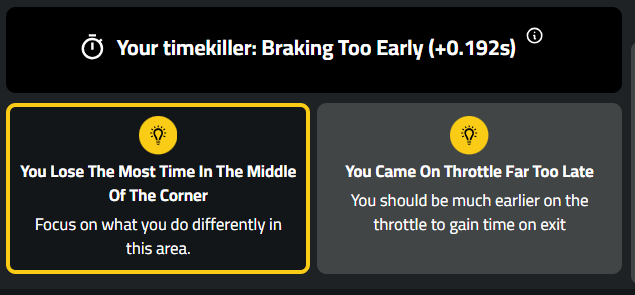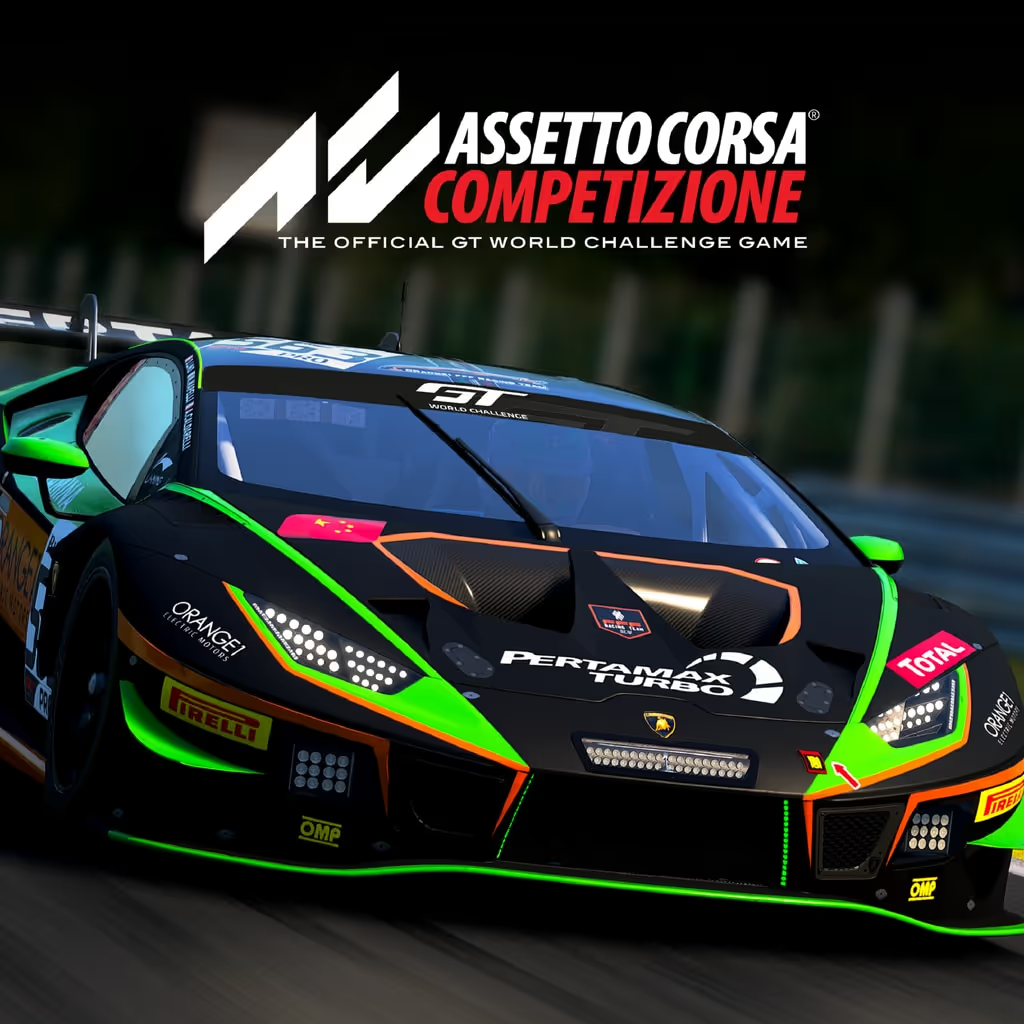Should You Use Traction Control and ABS?
Are driving assists helping or hindering? It’s a question many new drivers begin asking themselves after finding their feet in the world of sim racing. With Traction Control and ABS (Anti-Lock Braking System), it’s easy to let the game correct your mistakes, but when does it cross the line of helping, to hindering you? Well, in this article, we will explain how you can make that assessment for yourself.
Firstly we need to explain what each assist is, and how it helps you.
Traction Control
Traction control is a driving aid system used most commonly under acceleration. Its primary purpose is to prevent wheel-spin; helping drivers maintain control of their cars. It does this by reducing engine power or applying braking force to specific wheels in order to optimise traction and allow the non-spinning wheels to regain control of the car.
Anti-Lock Braking System (ABS)
ABS is a safety feature designed to prevent wheel lock-up during hard braking. When you slam on the brakes in a car equipped with ABS, the system rapidly modulates brake pressure to prevent the wheels from skidding and maintain steering control. Similar to how Traction Control limits throttle input if the wheels can’t grip, ABS limits your braking force to maintain traction.
So, now we know what each of two two assists are, let’s delve into whether or not you should be using them.
When to Use Traction Control:
Arguably, if you were to turn off one of the assists first, it should be Traction Control. As your lap times get quicker, and your driving becomes more consistent, you’ll start to notice a lag in power coming out of the corners. This is due to Traction Control limiting throttle input to stop wheel-spin and maintain traction on the road. Once you’ve noticed this, it will very quickly become annoying to deal with when your competitors can accelerate quicker out of a corner than you can.
Some games allow you to partially reduce Traction Control. In the F1 titles for example, you can have the option of Full, Medium or Off. In this instance, it would be worth reducing it to medium so the safety net is still there, but you push closer to the edge of grip and begin to learn how to balance the throttle against the available grip. However, if the game you’re playing has the simple On/Off setting, then you’ll probably spend the majority of your next practice session facing backwards; but this is not a bad thing!
Turning off Traction Control first allows you to learn a vital component of racing; car control. When you’re accelerating out of a corner, you need to modulate the throttle just enough to ensure maximum acceleration with minimal wheel-spin. It is good practice to drive a few practice sessions without Traction Control first, just to learn where you can push, and where you must be patient.
If we take a look at this throttle input from the Baku Street Circuit on F1 23 from the Track Titan Telemetry, you can see that it’s not until a few seconds after the apex of the corner that you are fully back on the accelerator. While using the Traction Control assist, you can put the throttle down immediately, your telemetry will still look something like this as the game will be modulating the accelerator for you. However, it will always err on the side of caution and never give you the full power you could have if you were driving without the assist.


It’s also worth noting that in damp or fully wet sessions, your first laps without traction control will seem uncontrollable. In these conditions, it's easier for your car's tires to lose grip, leading to spins and slides. Traction control can mitigate these issues by modulating power to the wheels, preventing excessive wheel spin but slowing you down at the same time.
Should I Turn Traction Control Off?
It’s down to the individual, but once you’re driving at a level where you notice the throttle delay and you notice your competitors accelerating earlier, then yes, you should turn it off. What will seem like time-loss initially, will yield a greater return in lap-time once you’ve learned to control the throttle.
If however, you are not quite consistent enough yet, or you’re struggling with braking points, turning points and racing lines, then it’s probably better to keep Traction Control Turned on. Until you’re comfortable with those aspects first, it will only make life more difficult while you’re still learning.
When to Use Anti-Lock Braking System (ABS):
The ABS is a fairly tricky assist to turn off. You see, you’re almost going to need to learn to drive again once you do. The system prevents you from locking up, and flat-spotting your tyres; ensuring your tyre life is elongated and you maintain control throughout varying conditions and braking zones.
Once you turn it off, you will brake into each corner as you normally would, and find yourself locking up your tyres, and going straight on at a corner. The advantage of turning it off however is similar to Traction Control, you have more control in how hard you want to brake, how long you want to brake for and how late you’re actually able to brake.
If we have a look at the Track Titan telemetry from the same corner as before, the difference with, and without ABS is astounding.

The green driver using ABS must brake for far longer at full capacity to slow the car down. This also results in a rush to get on the throttle, leaving virtually no time for trail braking (i.e. slowly coming off the brake to keep the car balanced on the exit of the corner). The blue driver spends around half a second at full brake capacity, instead modulating the brake to ease the car round the corner.
Without ABS, you can brake deeper and harder, giving you more control at the apex and essentially gaining you extra time on your competitors.
Should I Turn Off ABS?
Before doing so, you need to be comfortable with other assists turned off. The ABS really should be the final assist you have turned on and same as with Traction Control, it should only be disabled when you start noticing the loss in time.
If you’ve only just turned off traction control, you’re tentative on the throttle and still getting to grips with other assists disabled, then no, you should most definitely keep it on. However, if you are consistently comfortable with the driving, and you start noticing your competitors being able to brake later, and get on the throttle earlier, then yes, it might be time to disable it.
So both of these, and in fact all assists should be disabled in your own time; and only when you notice the performance to be gained. The assists are there to help drivers at different skill and experience levels. Not everyone will need them, not everyone should have them. However, if you’re serious about your racing, and you want to compete with the best of the best, eventually, they need turning off.
Traction Control arguably should be the first one of the two to be turned off, and indeed you probably have the most to gain by doing so. Don’t be deterred if when turning either assist off, you struggle to adapt to the difference. It takes patience and practice, but you will become a better driver in the process.
Don’t forget, you can also become a better driver by monitoring your lap times on the Track Titan app. You can see where others are gaining time on you and maybe, you’ll see it’s time to disable some of those assists too! Sign up FOR FREE today here!

.jpg)
.png)























